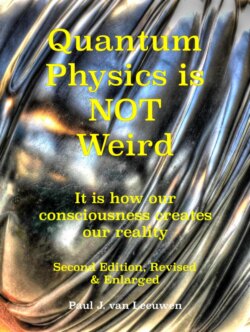Читать книгу Quantum Physics is NOT Weird - Paul J. van Leeuwen - Страница 21
На сайте Литреса книга снята с продажи.
The electromagnetic spectrum
ОглавлениеIn 1886, seven years after Maxwell’s publication, Heinrich Hertz (1857-1894) confirmed the existence of standing electromagnetic (radio) waves with a wavelength of almost 61 meters (200 ft). It is probably not a coincidence that the depth of his laboratory was 30 meters, so that half that wavelength fitted precisely. Maxwell's theory was confirmed. Hertz saw no practical use for his discovery. Guglielmo Marconi (1874-1937) saw its potential and realized the first radio communication in 1889. In 1896, shortly after that, the telegram service and the Morse code were invented. Nikola Tesla (1856-1943) forgot to patent his invention concerning sound communication using radio waves and the patent was granted to the cunning Marconi.
In 1895, Wilhelm Röntgen (1845-1923) discovered highly energetic EM-waves generated by applying a high voltage between the electrodes of a vacuum tube. Röntgen called his discovery X-rays.
Figure 3.10: Albert von Kölliker’s hand photographed by Röntgen.
These X-rays have wavelengths between 0.01 and 10 nanometers. The first X-ray photos are those of Röntgen’s acquaintances; see figure 3.10 for an X-ray of Albert von Kölliker’s hand. Röntgen also took such an X-ray of his wife's hand. Upon seeing the photo, she feared her end was near. Incidentally, it is a remarkable example of serendipity that Röntgen made his discovery because it struck him that a screen, covered with barium platinocyanide, lit up in his darkened laboratory when he activated his vacuum device. The fact that he had coincidentally such a screen standing readily available in his laboratory, the fact that Röntgen noticed the effect and the fact that he draw the right conclusion is an excellent example of serendipity, the accidental and unsolicited discovery [13]. Serendipitous discoveries abound in the history of science.
Physicists thus gradually discovered the entire spectrum of EM radiation, from radio waves with wavelengths of thousands of kilometers to gamma radiation with wavelengths of 10-14 meters. Visible light is only a very small part of the full known spectrum. The limits left and right of the spectrum in figure 3.11 are not the limits of EM radiation. There is no known absolute upper or lower limit of the EM spectrum.
Figure 3.11: The EM-spectrum. Source: biology.stackexchange.com
To the left of the gamma radiation and to the right of the radio waves the EM-spectrum continues infinitely. The limits in figure 3.11 are not fundamental, they represent just the limits of our measuring instruments.
